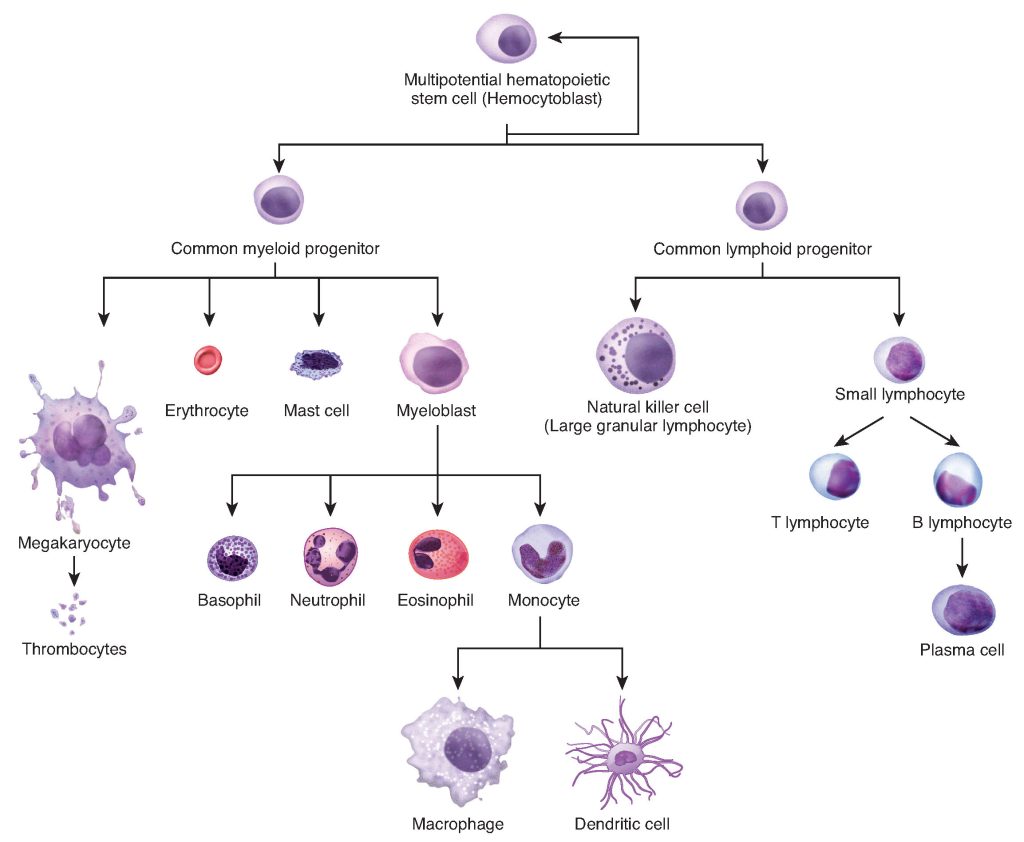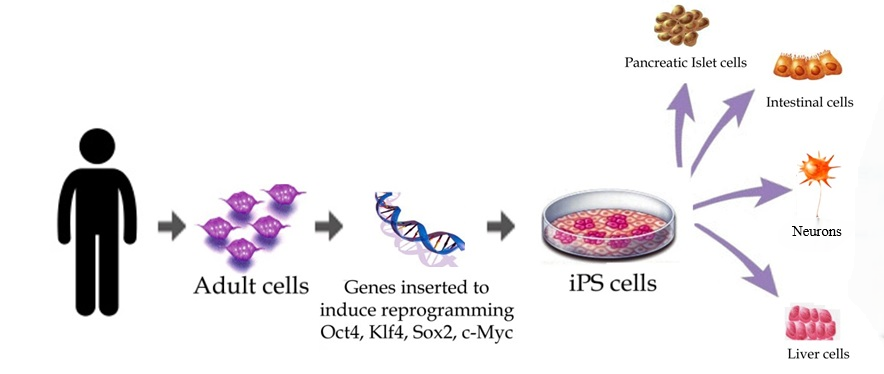10.2 Stem Cell Research
Stem cell research is a branch of biotechnology that explores stem cells’ properties and potential applications. A stem cell is an unspecialized cell that can develop into many different cell types and can also divide without limit. This versatility makes them invaluable tools for regenerative therapies, disease modelling, and drug discovery.
Stem Cell Types
Differentiation is the process by which a stem cell changes into a more specialized cell type, like a muscle cell, nerve cell, or blood cell.
Stem cells are categorized into several types based on their origin and potential to differentiate:
Embryonic Stem Cells (ESCs)
Embryonic stem cells (ESCs) are pluripotent, meaning they can differentiate into almost any cell type in the body. ESCs are often used in research to understand how cells differentiate and to develop therapies for various diseases. However, ESCs are controversial due to ethical concerns surrounding their origin. They are derived from early-stage human embryos, typically created through in vitro fertilization (IVF), that are not implanted. The process involves extracting cells from the embryo at a stage when it has the potential to develop into a human being, which raises ethical questions about the moral status of the embryo and whether it is acceptable to use it for research purposes. Critics argue that using embryos for stem cell research is equivalent to destroying potential human life. Supporters emphasize the potential medical benefits of ESC research, such as developing treatments for debilitating diseases and advancing regenerative medicine. This debate continues to shape policies and public opinion on using ESCs in research.
Adult Stem Cells
Adult stem cells are multipotent, meaning they can differentiate into a limited range of cell types related to their tissue of origin. For example, blood stem cells are multipotent because they can become red cells, white cells, or platelets—but not brain or muscle cells. They are less controversial than ESCs and can be harvested from the patient’s body, reducing the risk of immune rejection. Adult stem cells are commonly used in treatments for blood-related diseases, such as leukemia, through bone marrow transplants.

Induced Pluripotent Stem Cells (iPSCs)
Induced pluripotent stem cells (iPSCs) are adult cells reprogrammed to an embryonic-like pluripotent state. They offer a versatile and ethical alternative to ESCs since they do not require embryos. iPSCs were first created in 2006 by Japanese scientist Shinya Yamanaka and his team at Kyoto University. iPSCs are now commonly used in disease modelling, drug testing, and personalized medicine, allowing researchers to study patient-specific cells.

Applications of Stem Cell Research
Stem cell research has a wide range of applications in medicine and research:
Regenerative Medicine
Stem cells are pivotal in regenerative medicine, where they are used to repair or replace damaged tissues and organs. For example, hematopoietic stem cells (from bone marrow) are used in bone marrow transplants to treat blood-related diseases like leukemia. Researchers are also exploring using stem cells to treat conditions such as heart disease, diabetes, and spinal cord injuries by regenerating damaged tissues.
Disease Modelling
Stem cells are used to create models of diseases, allowing scientists to study how diseases develop and progress. By observing stem cells as they differentiate into various cell types, researchers can gain insights into the mechanisms underlying diseases like Parkinson’s and Alzheimer’s.
Drug Testing
Stem cells provide a platform for testing new drugs. By differentiating stem cells into specific cell types, researchers can test the effects of drugs on human cells in a controlled environment, which can better predict human responses than traditional animal models. This helps ensure the safety and efficacy of new treatments before they proceed to clinical trials.
Cultivated Meat
Cultivated meat, also known as lab-grown meat, is produced by growing animal muscle and fat cells in a lab using stem cells. Scientists typically start with muscle stem cells or iPSCs, which are capable of dividing and differentiating into the types of cells found in meat. These cells are cultured in bioreactors with nutrient-rich media, allowing them to grow and form tissue without the need to raise or slaughter animals. This application of stem cell research has the potential to revolutionize food production by offering a more sustainable and ethical alternative to conventional meat.
Cultivated meat is not yet widely available, with commercial sales limited to a few regions like Singapore and select U.S. cities. In Canada and many other countries, it is still undergoing regulatory review.
3D Bioprinting
3D bioprinting incorporates stem cells into 3D printing techniques to create tissues and organs. Advances in 3D bioprinting have led to the creation of organoids, miniature versions of organs, that can be used to study diseases and test treatments. Researchers haven’t yet been able to grow full-size organs in the lab, but are optimistic that it may eventually be possible.
Advances in stem cell research may eventually allow for personalized medicine. Personalized medicine is a medical approach that tailors treatment to the individual characteristics of each patient. This allows for more effective therapies and fewer side effects. This method contrasts with traditional medicine, which often uses a one-size-fits-all approach to treatment.
For example, research is underway to use a patient’s own stem cells to print personalized bone replacements that are designed to fit perfectly, reduce the chances of rejection, and improve recovery. iPSCs also have huge potential in personalized medicine. For example, in the future, researchers may be able to 3D bioprint patient-specific organs using cells from the individual’s body. This would ensure compatibility and reduce the risk of immune rejection.
“Cellular Differentiation” from Anatomy and Physiology I by OpenStax College is licensed under Attribution 4.0 International, except where otherwise noted.

